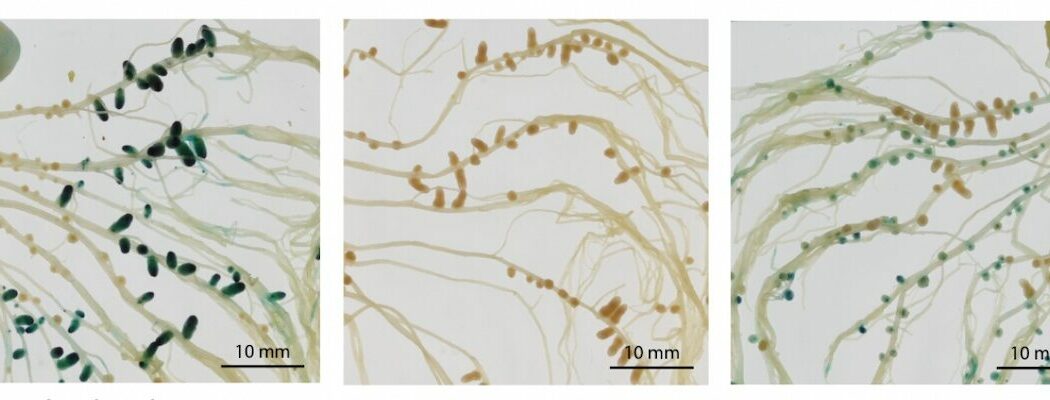Researchers at the University of Oxford have shown that pea plants are able to make smart investment decisions when it comes to interactions with their symbiotic bacterial partners. Better understanding of how plants manage these interactions could help with the move towards sustainable agriculture.
The new research, published in PNAS, shows that a plant weighs up the different bacterial partners, and then only provides sugar to the best available strains; cutting off those that are less good. This means that the plant must be able to compare different strains and invest accordingly: a strain that looks like a good investment in one context, might be a poor choice in another.
Annet Westhoek at the Department of Plant Sciences, University of Oxford, who jointly led the work said: ‘The bacteria only start to supply nitrogen once they have been in the nodules for a few days, so the plant has to wait before it can decide how beneficial each bacterial strain will be.’
Globally, the biggest factor limiting plant growth is a lack of nitrogen, which makes up almost 80% of the Earth’s atmosphere. But plants simply can’t make use of nitrogen gas in the air. For this reason, legumes – the plant family that includes peas – have evolved a symbiotic relationship with soil bacteria called rhizobia, which convert nitrogen gas into a form that plants can use.
Pea plants host the bacteria in specialised root growths called nodules, but the bacteria demand sugar from the plant in return for the nitrogen that they supply.
The plant is usually infected by many different bacterial strains and some bacteria provide more nitrogen than others, giving rise to an investment dilemma. While it was already known that some plants stop investing in bacteria which provide no nitrogen at all, by cutting off their sugar supply, it hasn’t been clear until now how plants make more subtle investment decisions.
This study used a novel approach by engineering a bacterial strain that was intermediate in its ability to provide nitrogen. The plants treated this strain differently depending on which other strains were available. When the only choice was a strain that provided no nitrogen at all, then the plant invested in the intermediate strain. But, when a really good strain was available, the plant cut off investment to the intermediate strain.
One of the study’s lead authors, Laura Clark, a DPhil student at Oxford’s Department of Plant Sciences and Merton College, said: ‘This research shows that plants must have some mechanism to compare different bacteria and make smart investment decisions. We were really surprised that plants could do that, rather than simply supplying sugars in proportion to the nitrogen supplied.’
Dr Lindsay Turnbull, who co-supervised the research, said: ‘This is a key development as previous research in this area used naturally-occurring bacteria which may have differed in many characteristics. In this study, the bacterial strains were genetically altered to provide different levels of nitrogen, so we can be sure that changes in the plant’s response are due to differences in their ability to supply nitrogen.’
Currently, most crop plants are supplemented with inorganic nitrogen fertilisers. These are produced on an industrial scale by the Haber-Bosch process, an energy-intensive reaction which consumes around 1% of the world’s energy supply. Their use also leads to run-off into waterways, causing excessive growth of algae and leading to coastal dead-zones.
Professor Phil Poole, who co-supervised the research, said: ‘Understanding how plants manage their interactions with bacteria could help us select plants which are better at choosing effective bacterial partners. This could reduce the demand for nitrogen fertilisers and the associated problems that they cause.’
Read the paper: PNAS
Article source: University of Oxford
Image: The pea plant root systems, with the nodules that the bacteria live inside showing the size of nodules when different combinations of bacteria are available to the plant. Credit: John Baker / Department of Plant Sciences






